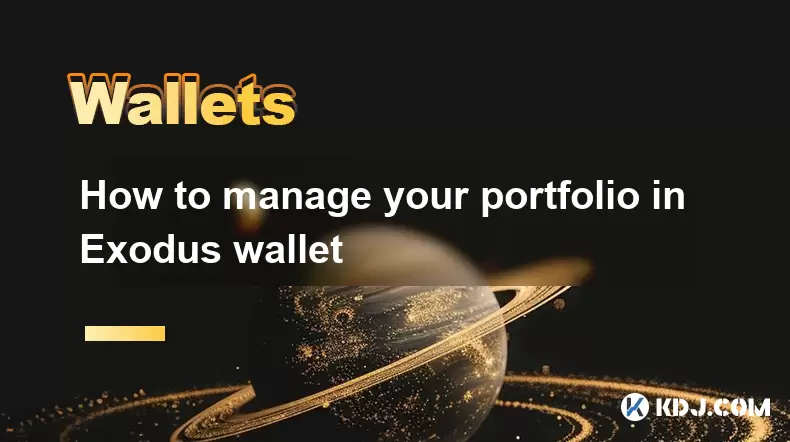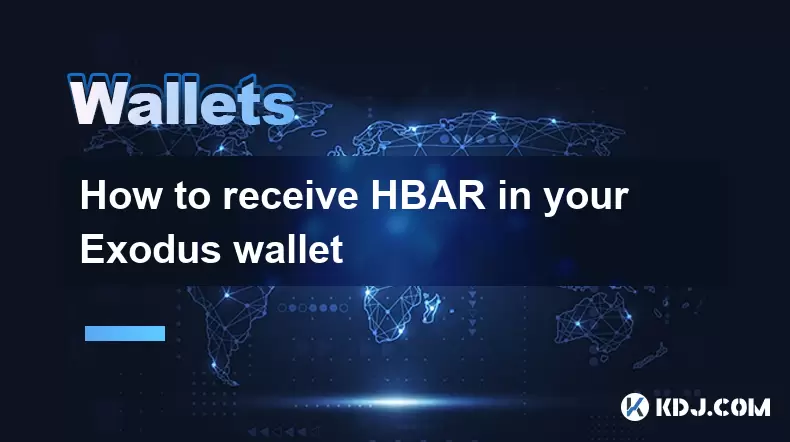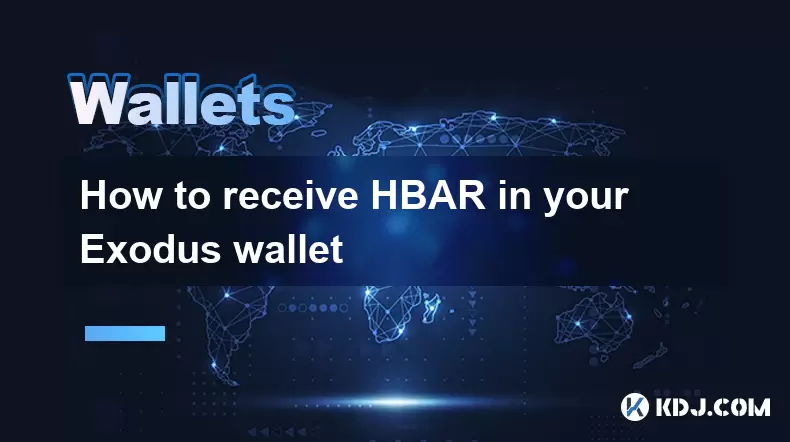-
 Bitcoin
Bitcoin $116700
0.24% -
 Ethereum
Ethereum $3973
4.34% -
 XRP
XRP $3.283
7.68% -
 Tether USDt
Tether USDt $1.000
0.01% -
 BNB
BNB $789.8
2.27% -
 Solana
Solana $176.2
3.31% -
 USDC
USDC $0.9999
0.00% -
 Dogecoin
Dogecoin $0.2238
5.14% -
 TRON
TRON $0.3389
-0.51% -
 Cardano
Cardano $0.7907
4.03% -
 Stellar
Stellar $0.4527
10.02% -
 Hyperliquid
Hyperliquid $41.07
4.27% -
 Sui
Sui $3.794
1.77% -
 Chainlink
Chainlink $19.49
10.40% -
 Bitcoin Cash
Bitcoin Cash $580.9
0.74% -
 Hedera
Hedera $0.2617
4.32% -
 Avalanche
Avalanche $23.41
3.67% -
 Ethena USDe
Ethena USDe $1.001
-0.03% -
 Litecoin
Litecoin $122.4
1.38% -
 Toncoin
Toncoin $3.364
1.49% -
 UNUS SED LEO
UNUS SED LEO $8.988
0.37% -
 Shiba Inu
Shiba Inu $0.00001295
2.82% -
 Uniswap
Uniswap $10.62
5.75% -
 Polkadot
Polkadot $3.922
4.46% -
 Dai
Dai $1.000
0.01% -
 Bitget Token
Bitget Token $4.494
2.15% -
 Monero
Monero $268.0
-1.30% -
 Cronos
Cronos $0.1523
3.68% -
 Pepe
Pepe $0.00001127
4.43% -
 Aave
Aave $285.4
4.85%
How do I import MetaMask transaction history?
Importing your MetaMask transaction history is crucial for tracking crypto activities and tax purposes; use third-party tools like Etherscan or crypto tax software to export and analyze your data.
Apr 12, 2025 at 07:35 pm

Importing your MetaMask transaction history can be an essential task for managing your cryptocurrency activities. Whether you're looking to keep a record of your transactions for tax purposes or simply want to track your investment performance, understanding how to import your transaction history is crucial. In this article, we'll explore the detailed steps to import your MetaMask transaction history and ensure that you have all the information you need.
Understanding MetaMask Transaction History
Before diving into the import process, it's important to understand what MetaMask transaction history entails. MetaMask is a popular cryptocurrency wallet that allows users to interact with the Ethereum blockchain. Your transaction history in MetaMask includes all the transactions you've made, such as sending and receiving Ethereum (ETH) and other ERC-20 tokens. This history is crucial for tracking your financial activities and ensuring that you have a clear record of all your transactions.
Preparing to Import Your Transaction History
To successfully import your MetaMask transaction history, you'll need to ensure that you have the necessary tools and access. Here are the prerequisites:
- MetaMask Wallet: Make sure you have your MetaMask wallet installed and accessible.
- Transaction History Access: You'll need to access your transaction history within MetaMask.
- Exporting Tool: Depending on your method, you may need a tool or platform to help you export and import the data.
Exporting Your Transaction History from MetaMask
The first step in importing your transaction history is to export it from MetaMask. Here's how you can do it:
- Open MetaMask: Launch your MetaMask wallet by clicking on the MetaMask extension in your browser.
- Navigate to Activity: Click on the "Activity" tab to view your transaction history.
- Select Transactions: You can filter your transactions by date or type to select the ones you want to export.
- Export Data: Unfortunately, MetaMask does not have a built-in export feature. However, you can manually copy the transaction details or use third-party tools to help you export the data.
Using Third-Party Tools to Export Transaction History
Since MetaMask does not offer a direct export feature, you may need to use third-party tools to help you export your transaction history. Here are some popular options:
- Etherscan: You can use Etherscan to view your transaction history and then manually copy the data.
- Visit Etherscan: Go to the Etherscan website and enter your Ethereum address.
- View Transactions: Navigate to the "Transactions" tab to see your transaction history.
- Copy Data: Manually copy the transaction details into a spreadsheet or document.
- Crypto Tax Software: Some crypto tax software, like Koinly or CoinLedger, can connect to your MetaMask wallet and automatically import your transaction history.
- Sign Up: Create an account with the tax software of your choice.
- Connect Wallet: Follow the instructions to connect your MetaMask wallet to the software.
- Import Data: The software will automatically import your transaction history.
Importing Your Transaction History into a Spreadsheet
Once you have exported your transaction history, you can import it into a spreadsheet for further analysis. Here's how to do it:
- Open Spreadsheet Software: Use a program like Microsoft Excel or Google Sheets.
- Create New Sheet: Open a new spreadsheet where you'll import your data.
- Paste Data: If you manually copied your transaction data, paste it into the spreadsheet.
- Format Data: Ensure that the data is formatted correctly, with columns for date, transaction type, amount, and other relevant details.
Importing Your Transaction History into Crypto Tax Software
If you're using crypto tax software to manage your transactions, you can import your transaction history directly into the platform. Here's how:
- Log into Software: Access your account on the crypto tax software.
- Navigate to Import: Find the section where you can import transaction data.
- Select Import Method: Choose the method to import your data, such as uploading a CSV file or connecting directly to your MetaMask wallet.
- Upload or Connect: Follow the prompts to upload your transaction data or connect your wallet.
- Review Data: Once the data is imported, review it to ensure that all transactions are accurately recorded.
Verifying Your Imported Transaction History
After importing your transaction history, it's crucial to verify that all the data is correct. Here's how to do it:
- Compare Data: Compare the imported data with your original transaction history in MetaMask to ensure that all transactions are included.
- Check for Errors: Look for any errors or discrepancies in the data, such as missing transactions or incorrect amounts.
- Correct Mistakes: If you find any mistakes, correct them in your spreadsheet or tax software.
Frequently Asked Questions
Q: Can I import my MetaMask transaction history into multiple platforms?
A: Yes, you can import your MetaMask transaction history into multiple platforms, such as different crypto tax software or spreadsheets. Just ensure that you follow the specific import instructions for each platform.
Q: Is it safe to use third-party tools to export my transaction history?
A: Generally, reputable third-party tools like Etherscan or well-known crypto tax software are safe to use. However, always ensure that you're using secure connections and that the tools are from trusted sources.
Q: How often should I import my transaction history?
A: It's a good practice to import your transaction history regularly, such as monthly or quarterly, to keep your records up to date. This can help with tax reporting and tracking your investment performance.
Q: Can I import transaction history from other wallets into MetaMask?
A: No, MetaMask does not support importing transaction history from other wallets. You can only view and export the transaction history that is directly associated with your MetaMask wallet.
Disclaimer:info@kdj.com
The information provided is not trading advice. kdj.com does not assume any responsibility for any investments made based on the information provided in this article. Cryptocurrencies are highly volatile and it is highly recommended that you invest with caution after thorough research!
If you believe that the content used on this website infringes your copyright, please contact us immediately (info@kdj.com) and we will delete it promptly.
- Navigating the Crypto Market in 2025: Smart Decisions for the Meme Supercycle
- 2025-08-09 08:50:12
- DeFi, Tokenized Stocks, and NFTs: A Wild Ride in the Crypto Cosmos
- 2025-08-09 08:30:11
- AERO Price Skyrockets: Aerodrome Finance Sees Massive Surge Amid Coinbase Buzz
- 2025-08-09 08:55:19
- Coinbase, Cosmos, and dYdX: Navigating the Crypto Currents
- 2025-08-09 06:30:16
- BNB Price, Altcoins, and Predictions: What's the Buzz?
- 2025-08-09 06:30:16
- Crypto Presale Projects Primed for Gains in 2025: A New Yorker's Take
- 2025-08-09 06:50:15
Related knowledge

How to manage your portfolio in Exodus wallet
Aug 08,2025 at 10:07pm
Understanding the Exodus Wallet InterfaceThe Exodus wallet is a non-custodial cryptocurrency wallet that supports a wide range of digital assets. When...

How to reset your MetaMask password
Aug 08,2025 at 01:28pm
Understanding the MetaMask Password Reset ProcessMany users confuse the MetaMask password with the seed phrase or private key, but they serve differen...

How to buy Dogecoin on MetaMask
Aug 08,2025 at 03:42am
Understanding Dogecoin and MetaMask CompatibilityDogecoin (DOGE) is a popular meme-based cryptocurrency that operates on its own blockchain, originall...

How to receive HBAR in your Exodus wallet
Aug 08,2025 at 11:28pm
Understanding HBAR and the Hedera NetworkThe HBAR cryptocurrency is the native token of the Hedera Hashgraph network, a distributed ledger technology ...

How to receive HBAR in your Exodus wallet
Aug 09,2025 at 06:07am
Understanding HBAR and the Hedera NetworkHBAR is the native cryptocurrency of the Hedera Hashgraph network, a distributed ledger technology that uses ...

How to create a new crypto wallet
Aug 07,2025 at 09:22pm
Understanding the Basics of a Cryptocurrency WalletA cryptocurrency wallet is a digital tool that allows users to store, send, and receive digital ass...

How to manage your portfolio in Exodus wallet
Aug 08,2025 at 10:07pm
Understanding the Exodus Wallet InterfaceThe Exodus wallet is a non-custodial cryptocurrency wallet that supports a wide range of digital assets. When...

How to reset your MetaMask password
Aug 08,2025 at 01:28pm
Understanding the MetaMask Password Reset ProcessMany users confuse the MetaMask password with the seed phrase or private key, but they serve differen...

How to buy Dogecoin on MetaMask
Aug 08,2025 at 03:42am
Understanding Dogecoin and MetaMask CompatibilityDogecoin (DOGE) is a popular meme-based cryptocurrency that operates on its own blockchain, originall...

How to receive HBAR in your Exodus wallet
Aug 08,2025 at 11:28pm
Understanding HBAR and the Hedera NetworkThe HBAR cryptocurrency is the native token of the Hedera Hashgraph network, a distributed ledger technology ...

How to receive HBAR in your Exodus wallet
Aug 09,2025 at 06:07am
Understanding HBAR and the Hedera NetworkHBAR is the native cryptocurrency of the Hedera Hashgraph network, a distributed ledger technology that uses ...

How to create a new crypto wallet
Aug 07,2025 at 09:22pm
Understanding the Basics of a Cryptocurrency WalletA cryptocurrency wallet is a digital tool that allows users to store, send, and receive digital ass...
See all articles

























































































